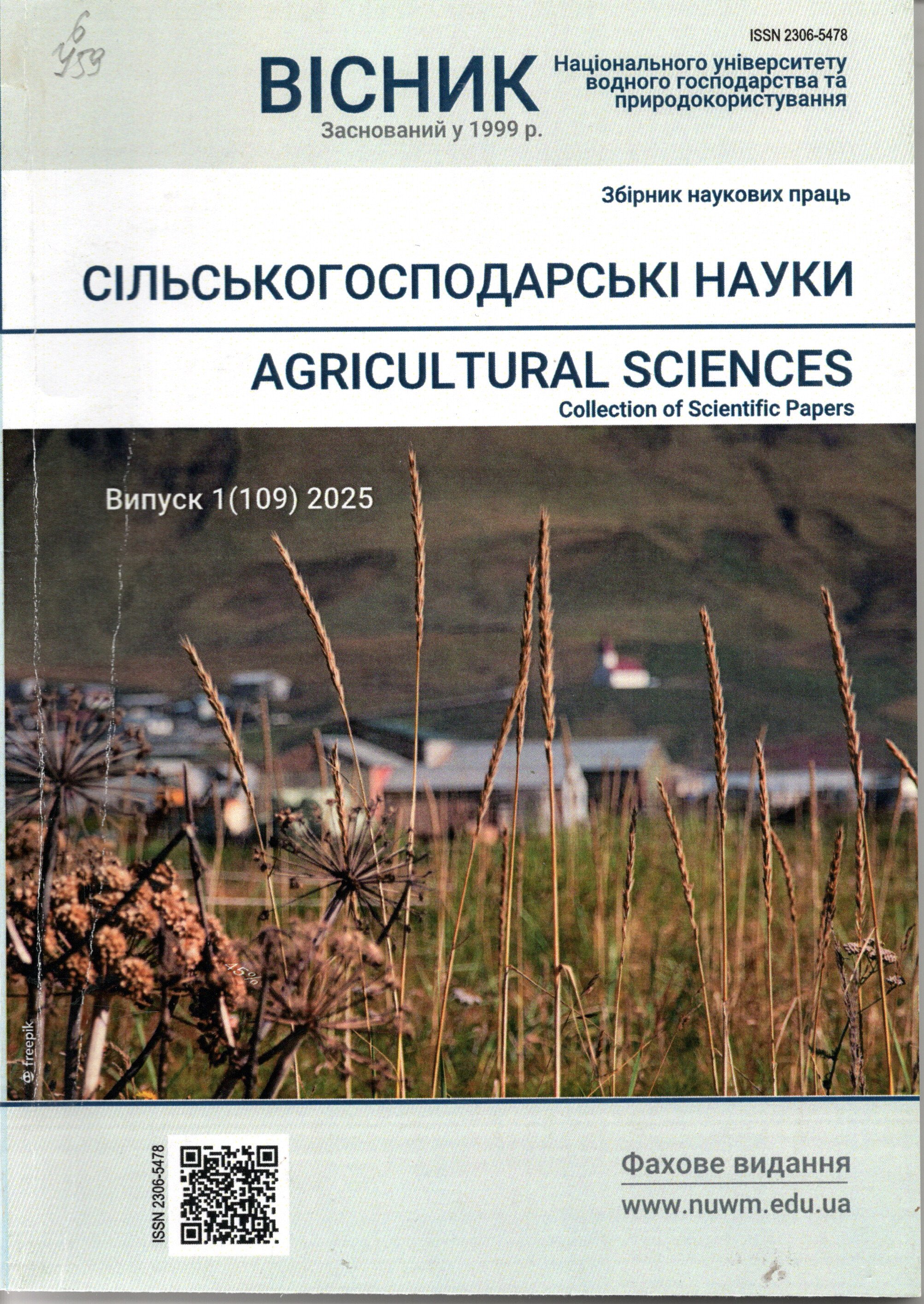THE INFLUENCE OF CORN MONOCULTURE GROWING ON AGROCHEMICAL INDICATORS OF LIGHT-GRAY PODZOLATED SOIL
DOI:
https://doi.org/10.31713/vs1202511Keywords:
corn monoculture, light gray podzolized soil, cultivation technology, yield, agrochemical indicatorsAbstract
The work investigates and analyzes the technology of growing corn as a monoculture and its impact on the fertility of light-gray podzolized soil in the conditions of LLC "LORETT" Khmelnytskyi region. Analysis of the activities of the LLC "LORETT" farm shows that with the correct use of corn monoculture technology, it is possible to obtain a yield of 10–11 t/ha. Corn is grown as a permanent crop for 6 years on an area of 620 hectares. Research and calculations have shown that the fertilization system on the farm allows you to obtain a positive balance of almost all nutrients, except phosphorus, boron and molybdenum. The results of laboratory soil tests indicate an improvement in agrophysical indicators, an increase of 0.1% in humus, 11 mg/kg of soil nitrogen and 3 mg of potassium. A slight decrease in boron content was recorded (by 0.09 mg/kg). The molybdenum content remained the same. The soil acidity index did not change, and the agrochemical score increased from 48 to 50. In order to achieve a positive balance, it is proposed to increase the application of phosphorus by 20–30 kg d.r. P2O5. Considering that the plant absorbs only 20–30% of microelements through root nutrition, for a positive balance we recommend applying 0.5 kg/ha of boron and molybdenum each year. It is worth switching from plowing to minimal tillage. Great attention should be paid to the thorough grinding of corn plant residues, the mass of which is 11–12 t/ha. Corn by-products in the absence of manure are an additional source of macro- and microelements entering the soil. When sowing, hybrids with different FAO indicators should be used. This allows for timely technological techniques and harvesting. An analysis of the positive and negative aspects of growing corn monoculture shows that there are much more advantages, and the disadvantages can be corrected or their impact minimized. Corn monoculture requires much less expenditure on the purchase of equipment than when growing several different crops in crop rotations. Corn in monoculture requires more nitrogen than in other crop rotations, and also requires more thorough grinding of residues. In addition, when growing corn in monoculture, the soil warms up more slowly.Downloads
Published
2025-11-06
Issue
Section
Articles

